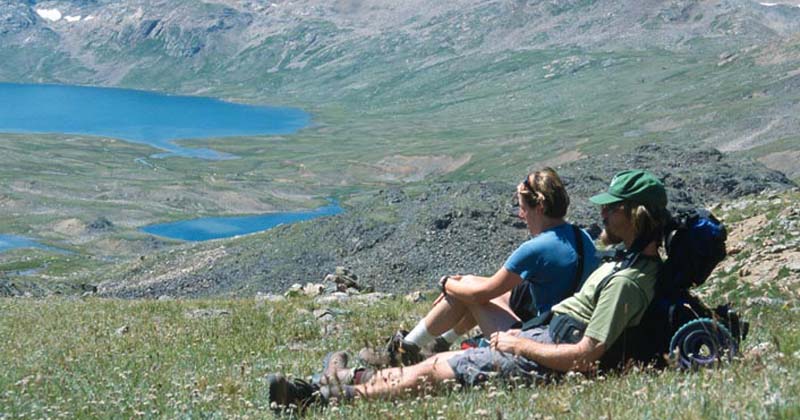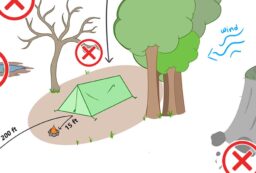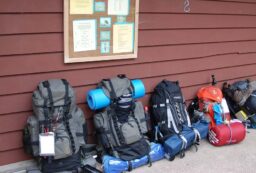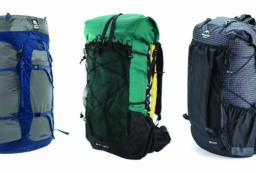Want to go on an overnight backpacking trip with your boyfriend or girlfriend or spouse? In addition to figuring out what gear you’ll bring, you also need to figure out how to divide up the gear between packs. It is actually trickier than it seems.
Should men carry more of the gear because they are “stronger”?
Or is it fairer to share the gear weight equally?
As a woman who goes backpacking often, I can tell you how offensive it is when men assume I am “weak”. I’ve even had men offer to carry my pack several times while on the trail! This might have to do with the fact that I live in the Balkans and there’s almost zero backpacking culture here, nevertheless solo female backpackers.
I know the men are trying to be helpful and chivalry is pretty nice in some situations. And admittedly I once did let a man carry my pack for several miles – I was backpacking pregnant and was grateful when the massively-strong mountain guy took my pack from me. But still. It’s annoying and insulting when a guy assumes I can’t carry my own pack. As another female backpacker on Reddit pointed out, it sucks that there’s this impression that women can’t do it without any help.
On the flip side though, I know men are generally stronger than women. Of course there are exceptions (Serena Williams, anyone?). However, I’m no Serena. I’m a petite 5’1” and 110lbs. It would be ridiculous to divide up gear weight equally between a 110lb woman and 200lb man!
How to Share the Weight Fairly
Option 1: Divide Gear Based on Bodyweight
One good solution to this “men are stronger” issue is to: Divide gear proportionally based on bodyweight. This ends up being fair without being sexist.
For example:
- The average weight for a healthy 30 year old woman is 127lbs. For men, it’s 147lbs.*
- If they had a total of 50lbs of gear, using proportional division we could calculate that the woman gets 23lbs and the man gets 27lbs.
- This puts both the man and woman below the target of carrying no more than 20% of their bodyweight.
Note: You can also use this method to divide up food. The larger person gets a larger meal serving. 🙂
2. The Fitter Partner Carriers More
The bodyweight proportion method might not be the best solution for all couples. Weight also doesn’t correlate with physical fitness. I’d really hate it if an overweight person got turned off of backpacking because their pack was too heavy to enjoy it. Better to let the more experienced, physically-fit backpackers carry the bulk of the weight.
3. The Faster Partner Carriers More
If you are a fast hiker, you might be happy to carry more weight if it means your hiking partner will speed up. It sure beats having to wait around for them to catch up!
4. One Partner Carries the Food and Consumables
Some couples find other ways of dividing up the gear weight fairly. For example, one Backpacking Light forum member said she and her partner each carry their own personal stuff. She carries the food and he carries the tent and cookset. Her pack actually starts out heavier but ends up lighter by the end of the trip.
5. Divide Gear by Task
If one person is in charge of setting up the tent when arriving at camp, that person should carry the tent. If the other person’s job is to get dinner started, that person should carry the food, stove, and mess kit.
Eliminate Redundancy – but Make Sure Each Person Has Essentials
One of the benefits of hiking with a partner is you can share gear and your packs end up lighter. For example, there’s no reason for both of you to bring a stove, cook pot, and bear canister. You’ll probably be sharing a tent too. *I’d advise against sharing a sleeping bag though. Double-wide sleeping bags are never as much fun as they sound! 🙂
However, don’t go so overboard with sharing that one of you might end up without crucial items. The two of you could get separated. If that happened and only one of you was carrying the map, the other person could end up in some serious trouble. Please read this post about items to always have with you while on a hike.
Image credit:”Absaroka-Beartooth Wilderness, Goose Lak” (CC BY 2.0) by wilderness.webmaster













Post your comments